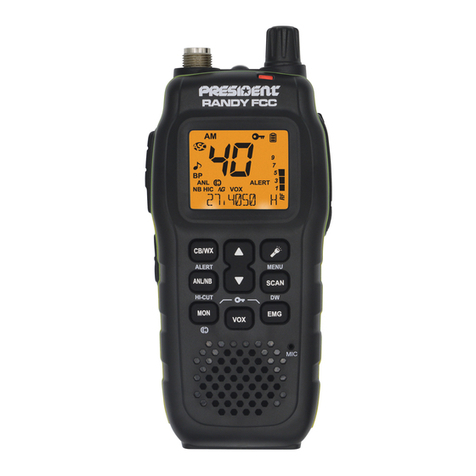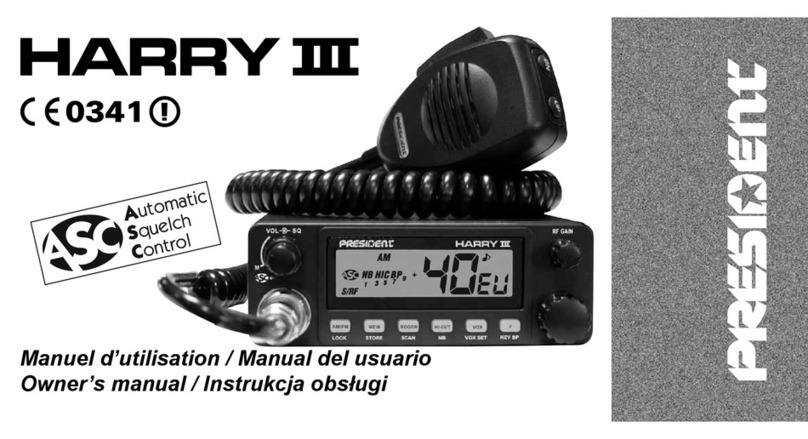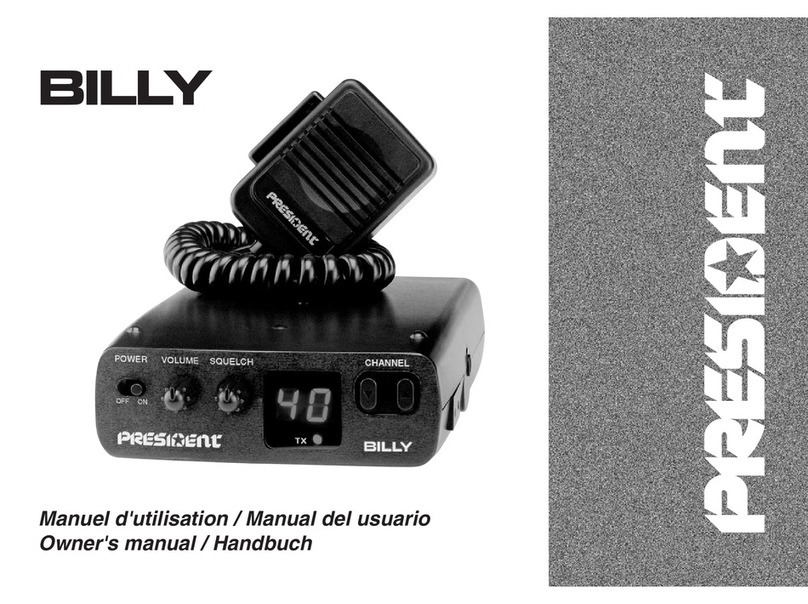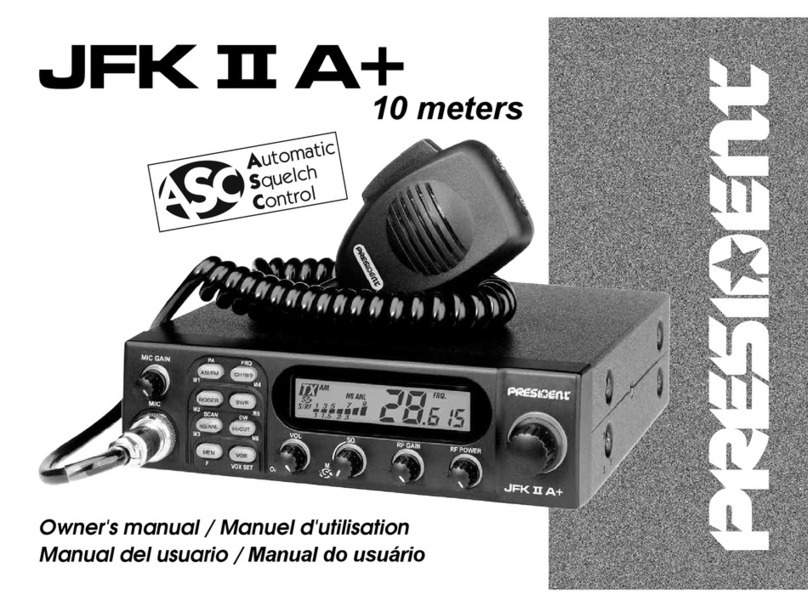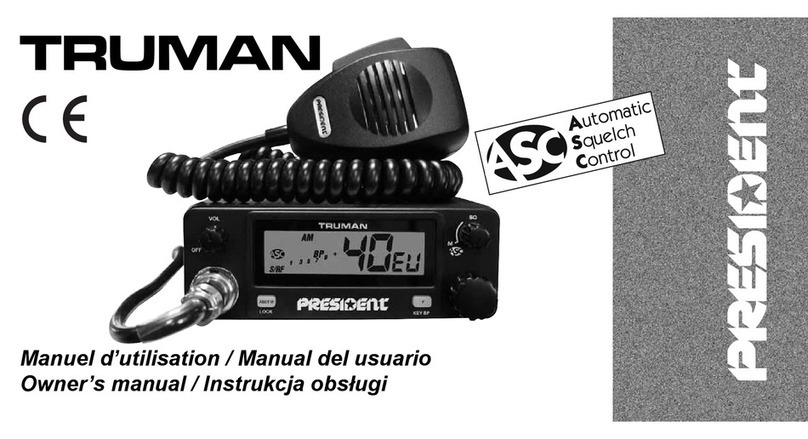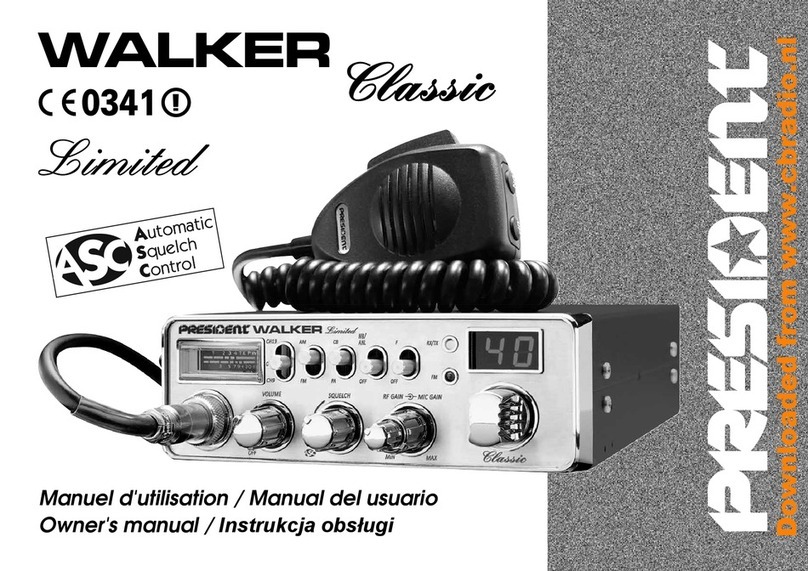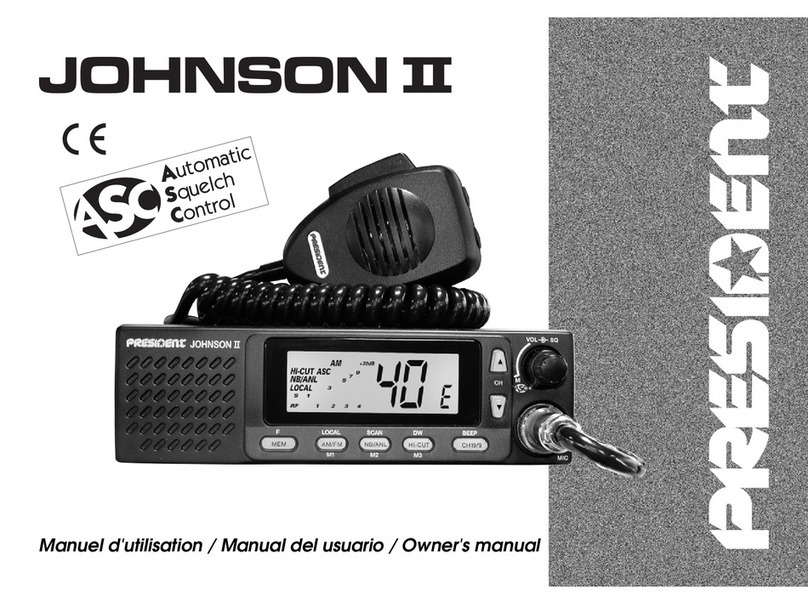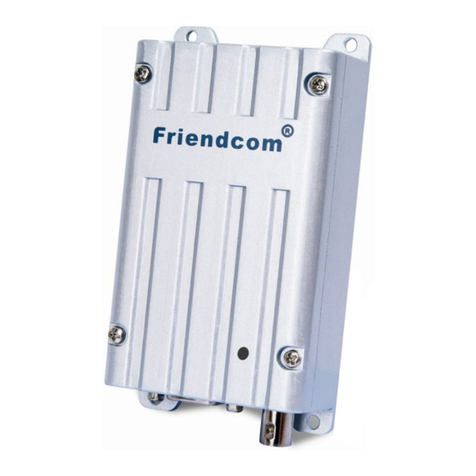OUTPUT RADIUS PATTERN
2) ANTENNA INSTALLATION
a)Choosing your antenna:
- For CB radios, the longer the antenna, the better its results. Your dealer will be able
to help you with your choice of antenna.
b)Mobile antenna:
- Must be fixed to the vehicle where there is a maximum of metallic surface (ground
plane), away from windscreen mountings.
- If you already have a radio-telephone antenna installed, the CB antenna should be
higher than this.
- There are two types of antenna: pre-regulated which should be used on a good
ground plane (e.g. car roof or lid of the boot), and adjustable which offer a much
larger range and can be used on a smaller ground plane (see § 5, Adjustment of
SWR).
- For an antenna which must be fixed by drilling, you will need a good contact be-
tween the antenna and the ground plane. To obtain this, you should lightly scratch
the surface where the screw and tightening star are to be placed.
- Becareful not to pinchorflatten the coaxialcable(as this runstherisk of break down
and/or short circuiting).
- Connect the antenna (B).
c)Fixed antenna:
- A fixed antenna should be installed in a clear a space as possible. If it is fixed to a
mast,itwillperhapsbenecessarytostayit,
accordingtothelawsinforce(youshould
seek professional advice). All PRESIDENT
antennas and accessories are designed
to give maximum efficiency to each CB
radio within the range.
3) POWER CONNECTION
YourPRESIDENTHARRYIIIASC is protected againstaninversion of polarities. However,
beforeswitchingit on,youareadvisedto checkalltheconnections.Your equipment
mustbesuppliedwithacontinuedcurrentof 12 volts (A). Today,most cars and lorries
are negative earth. You can check this by making sure that the negative terminal
of the battery is connected either to the engine block or to the chassis. If this is not
the case, you should consult your dealer.
WARNING: Lorries generally have two batteries and an electrical installation of 24
volts,in which case itwill be necessarytoinsert a 24/12voltconverter (type CV24/12
PRESIDENT)intotheelectricalcircuit.Thefollowingconnectionstepsshouldbecarried
out with the power cable disconnected from the set.
a) Check that the battery is of 12 volts.
b) Locate the positive and negative terminals of the battery (+is red and -is black).
Should it be necessary to lengthen the power cable, you should use the same or a
superior type of cable.
c) Itis necessaryto connect your CB toa permanent (+)and (-). We advise youto con-
nect the power cable directly to the battery (as the connection of the CB cable to
the wiring of the car-radio or other parts of the electrical circuit may, in some cases,
increase the likelihood of interference).
d) Connect the red wire (+) to the positive terminal of the battery and the black (-)
wire to the negative terminal of
the battery.
e) Connectthepowercabletoyour
CB radio.
WARNING: Never replace the
original fuse (2 A) by one of a
different value.
English
33

